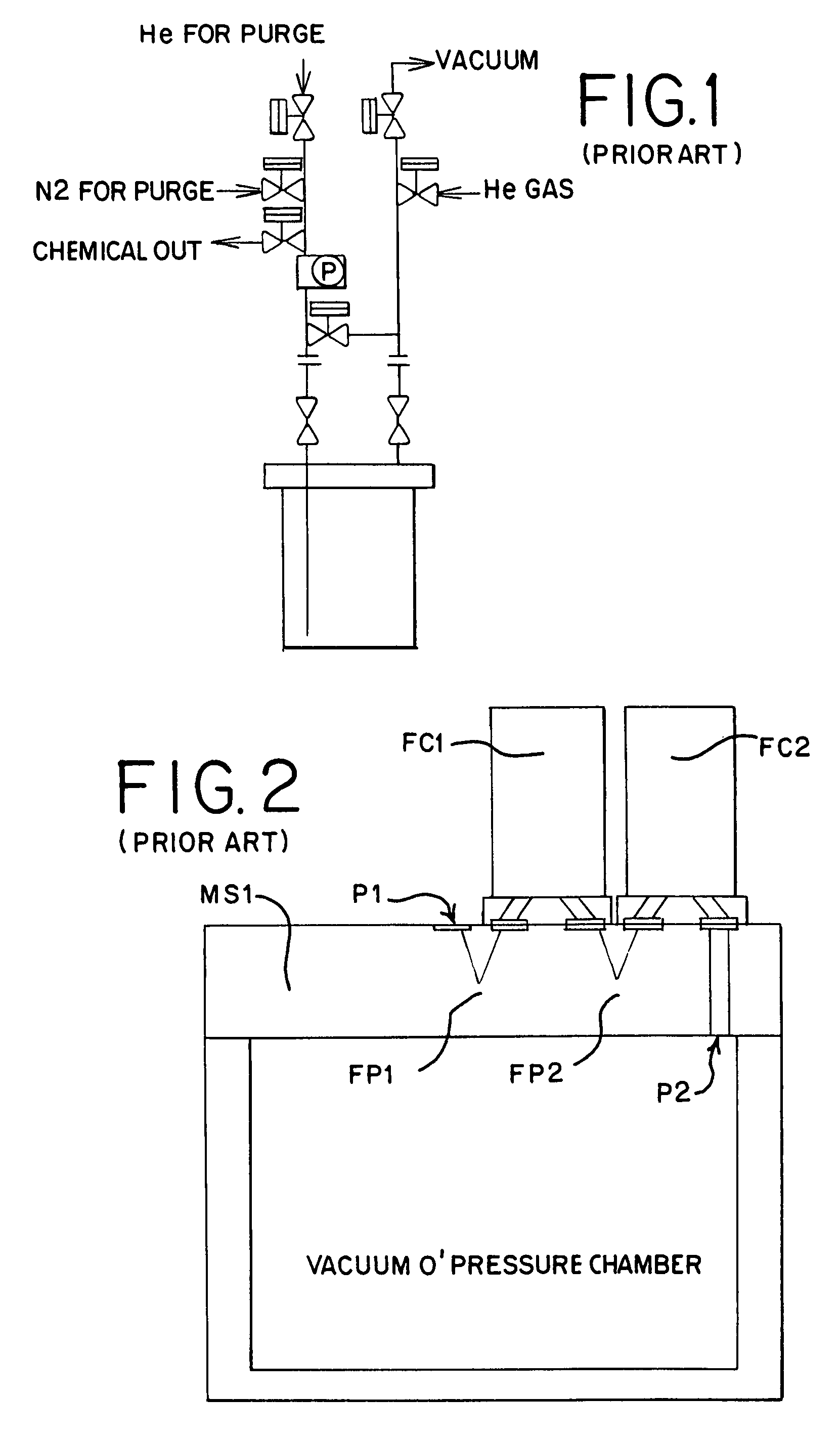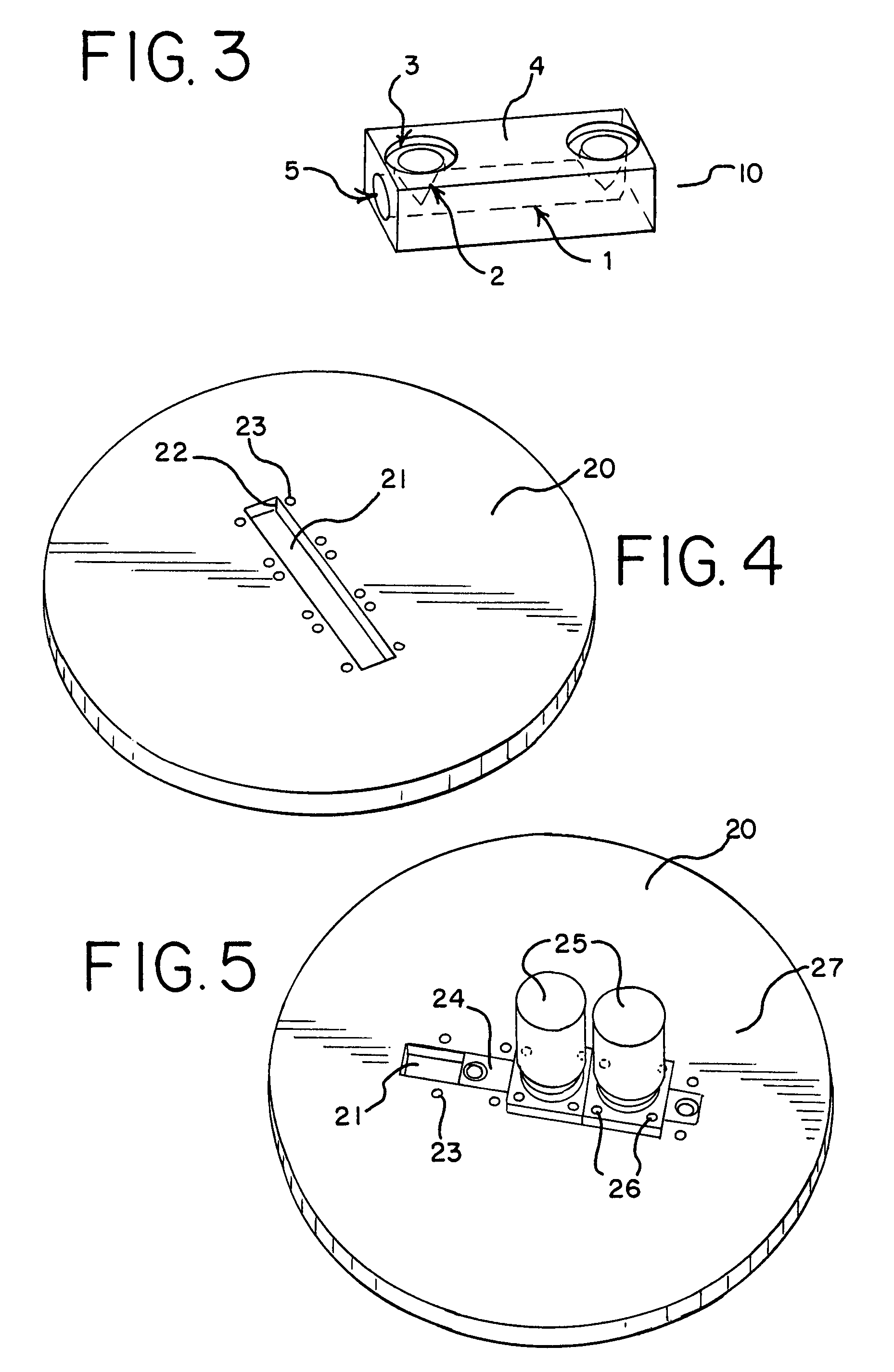Fluid transport in monolithic structures
a monolithic structure and fluid technology, applied in the direction of valve housings, transportation and packaging, mechanical equipment, etc., can solve the problems of increasing the overall space required for installation and use of the canister, increasing the overall space required for the canister, and weakening and failure of the welded joints between the components and at the canister joints, so as to achieve less depth and more cost-effective implementation
- Summary
- Abstract
- Description
- Claims
- Application Information
AI Technical Summary
Benefits of technology
Problems solved by technology
Method used
Image
Examples
Embodiment Construction
[0032]My invention is useful with all process fluids known to those skilled in the art, including gases and liquids typically used in the fabrication of electronic parts, including semiconductor wafers. The modular inserts of my invention are preferably manufactured using metals that can transport corrosive process fluids. Such metals include those normally used for ultra-high purity chemical and gas delivery, and for ultra-high vacuum environments, including stainless steel of various alloys, Monel®, nickel, cobalt, titanium, Hastelloy®, and combinations thereof.
[0033]A substantially square or rectangular shaped modular fluid insert is preferred for use in adapting MSM fluidic components directly to the surface of monolithic structures such as containment structures on chemical canisters and vacuum or pressure vessels, or semiconductor wafer processing chambers, or surfaces integral to larger fluidic conduits. More preferably, the overall dimensions of the insert may be seen to be ...
PUM
 Login to View More
Login to View More Abstract
Description
Claims
Application Information
 Login to View More
Login to View More - R&D
- Intellectual Property
- Life Sciences
- Materials
- Tech Scout
- Unparalleled Data Quality
- Higher Quality Content
- 60% Fewer Hallucinations
Browse by: Latest US Patents, China's latest patents, Technical Efficacy Thesaurus, Application Domain, Technology Topic, Popular Technical Reports.
© 2025 PatSnap. All rights reserved.Legal|Privacy policy|Modern Slavery Act Transparency Statement|Sitemap|About US| Contact US: help@patsnap.com



